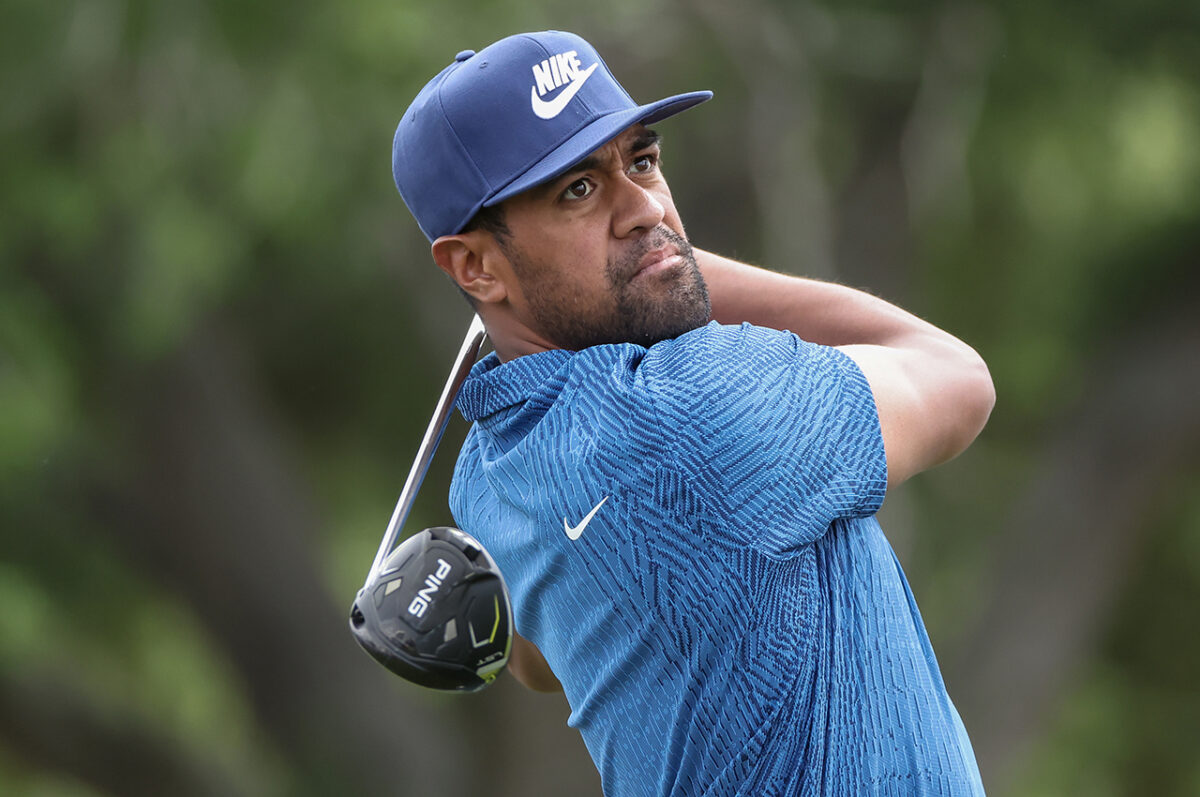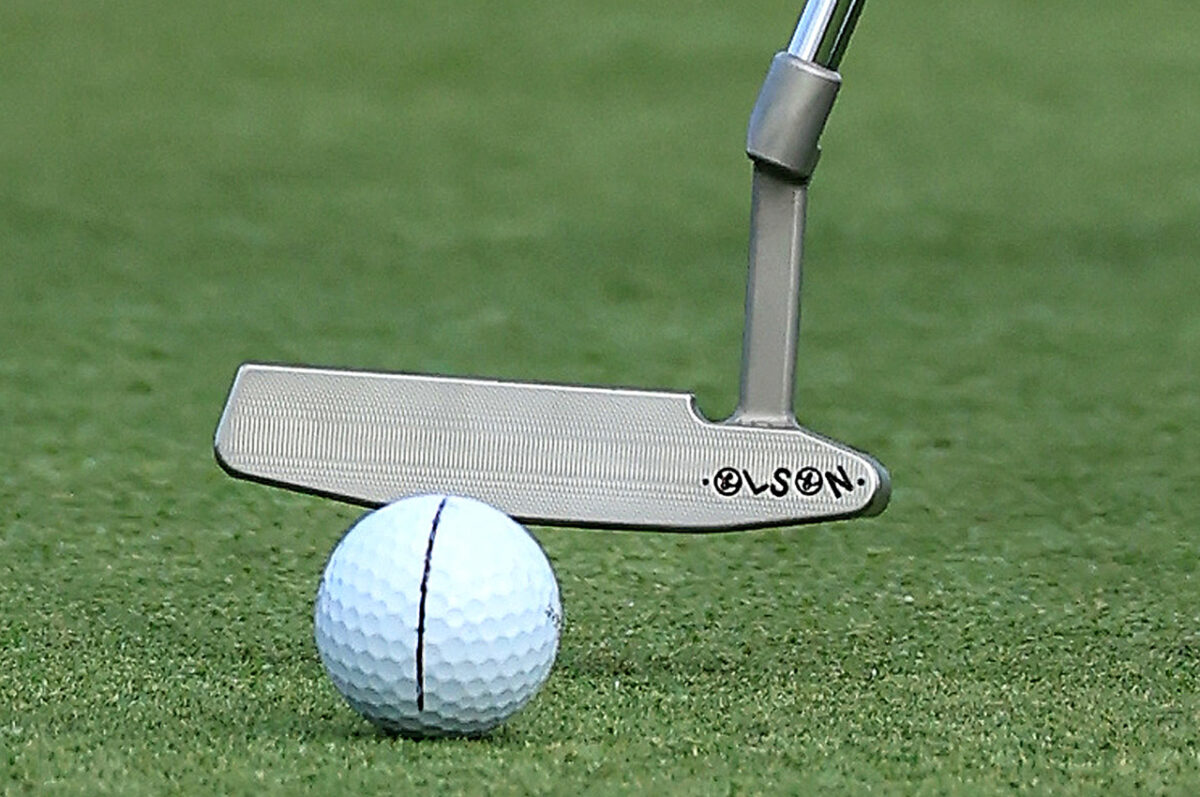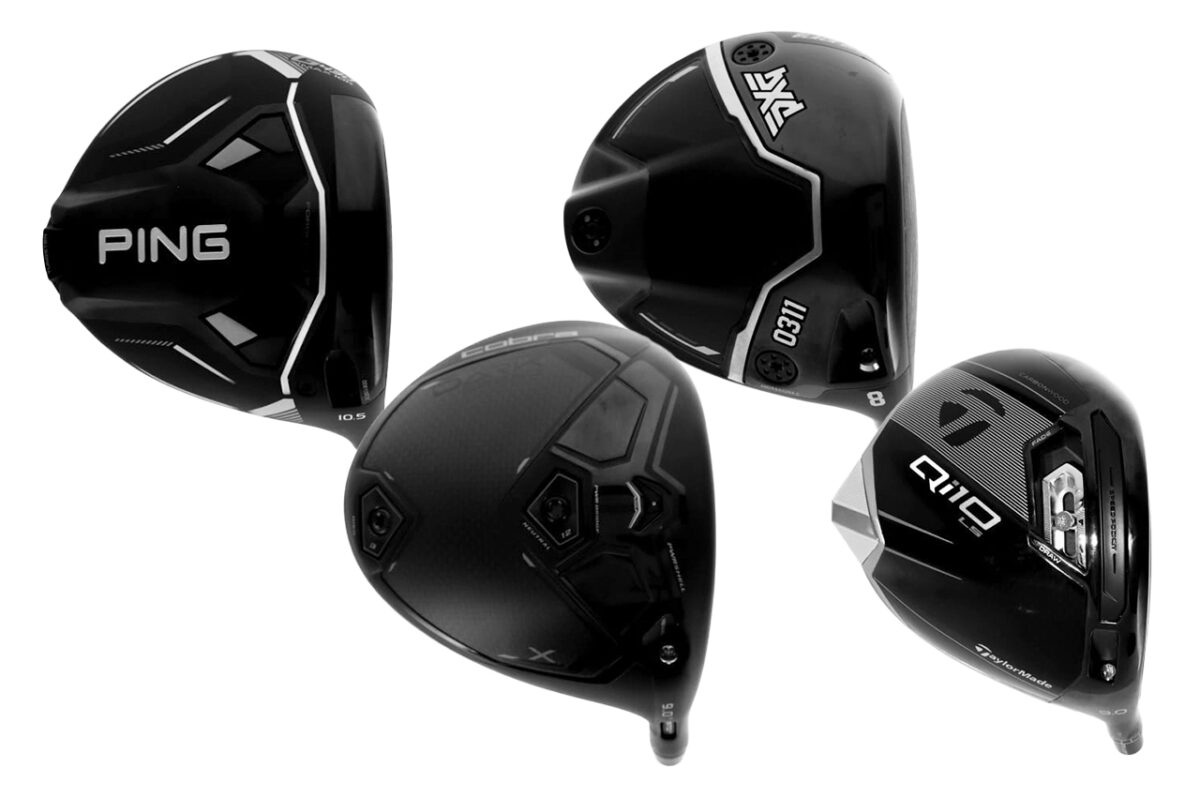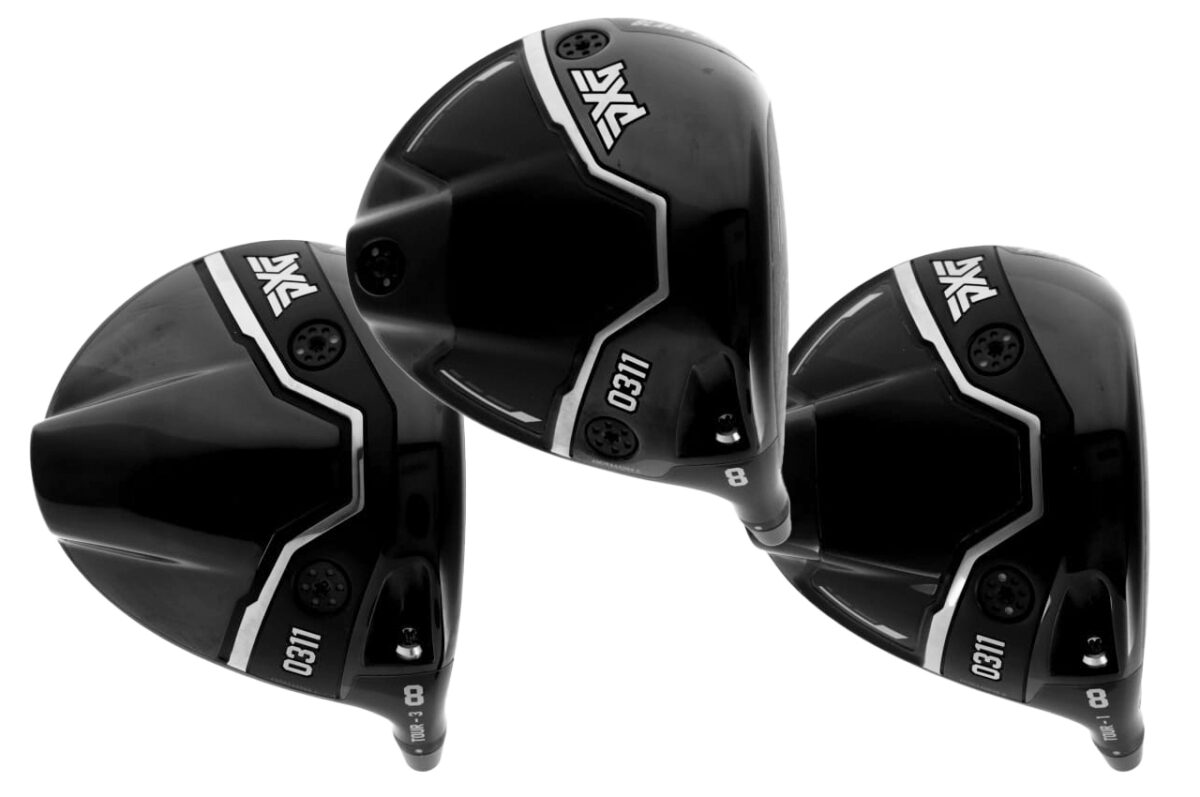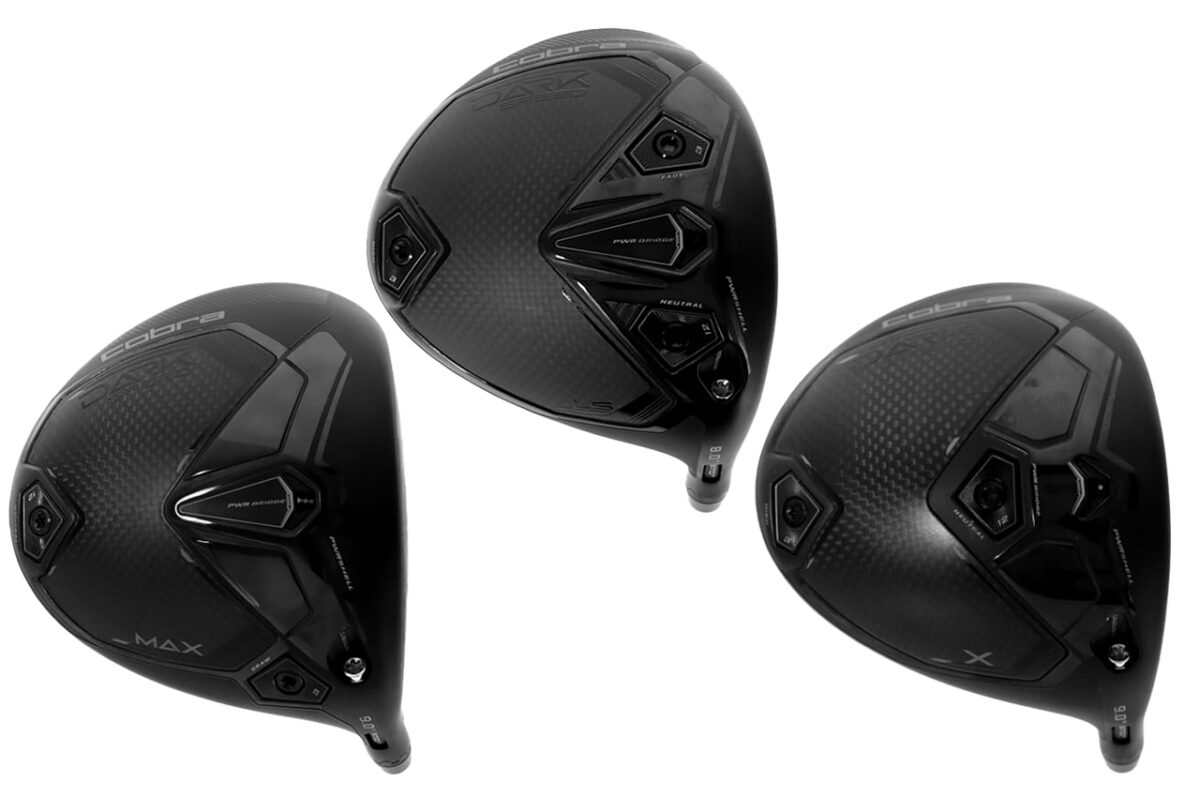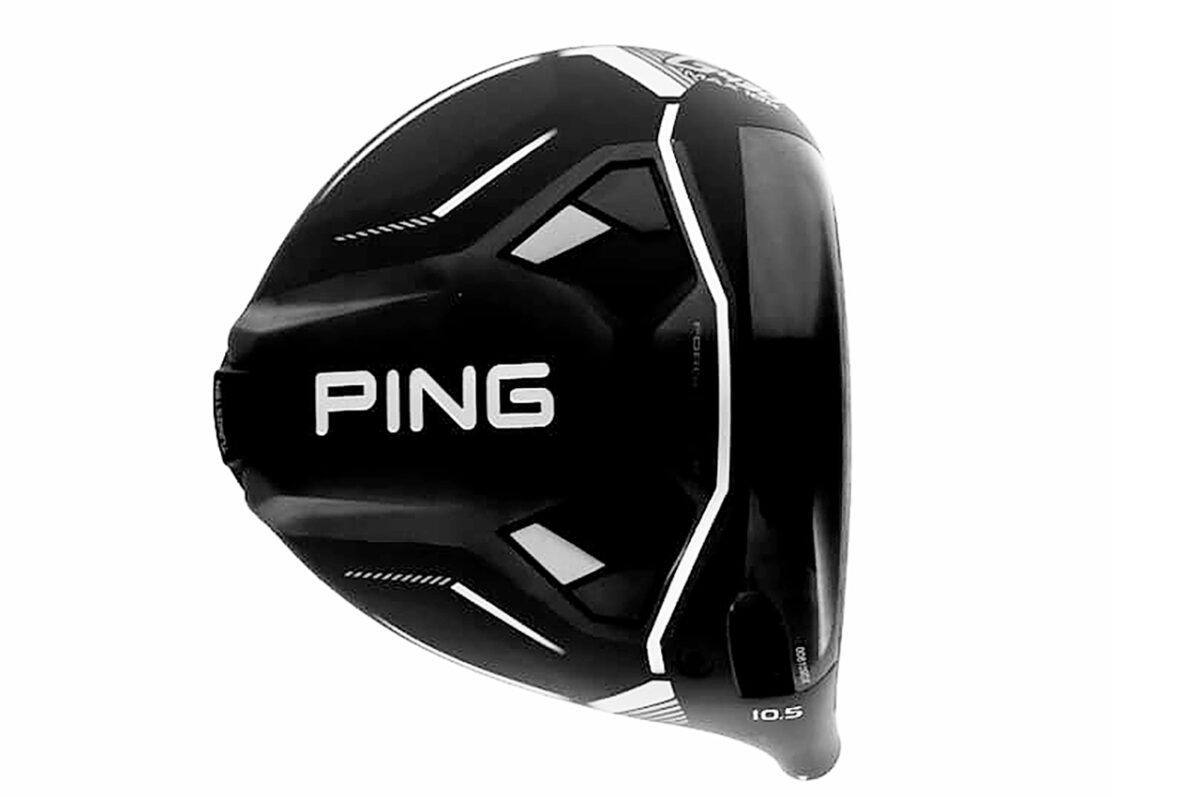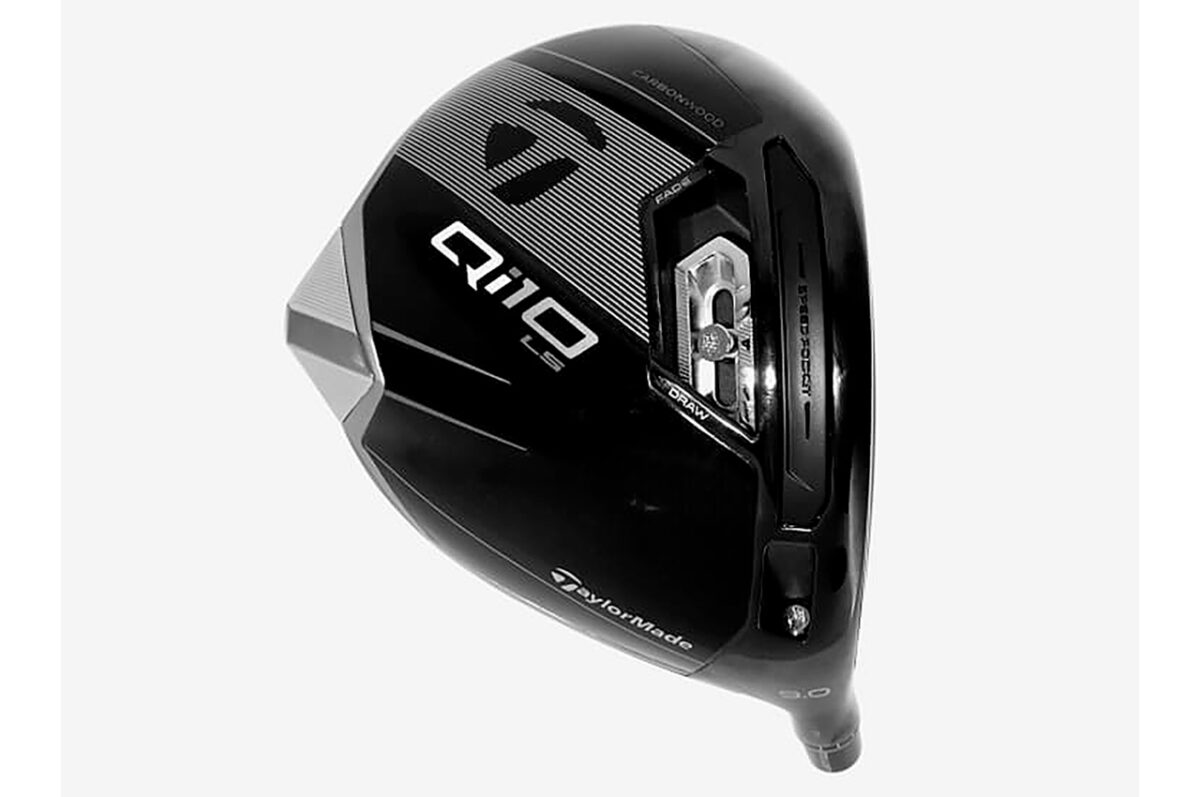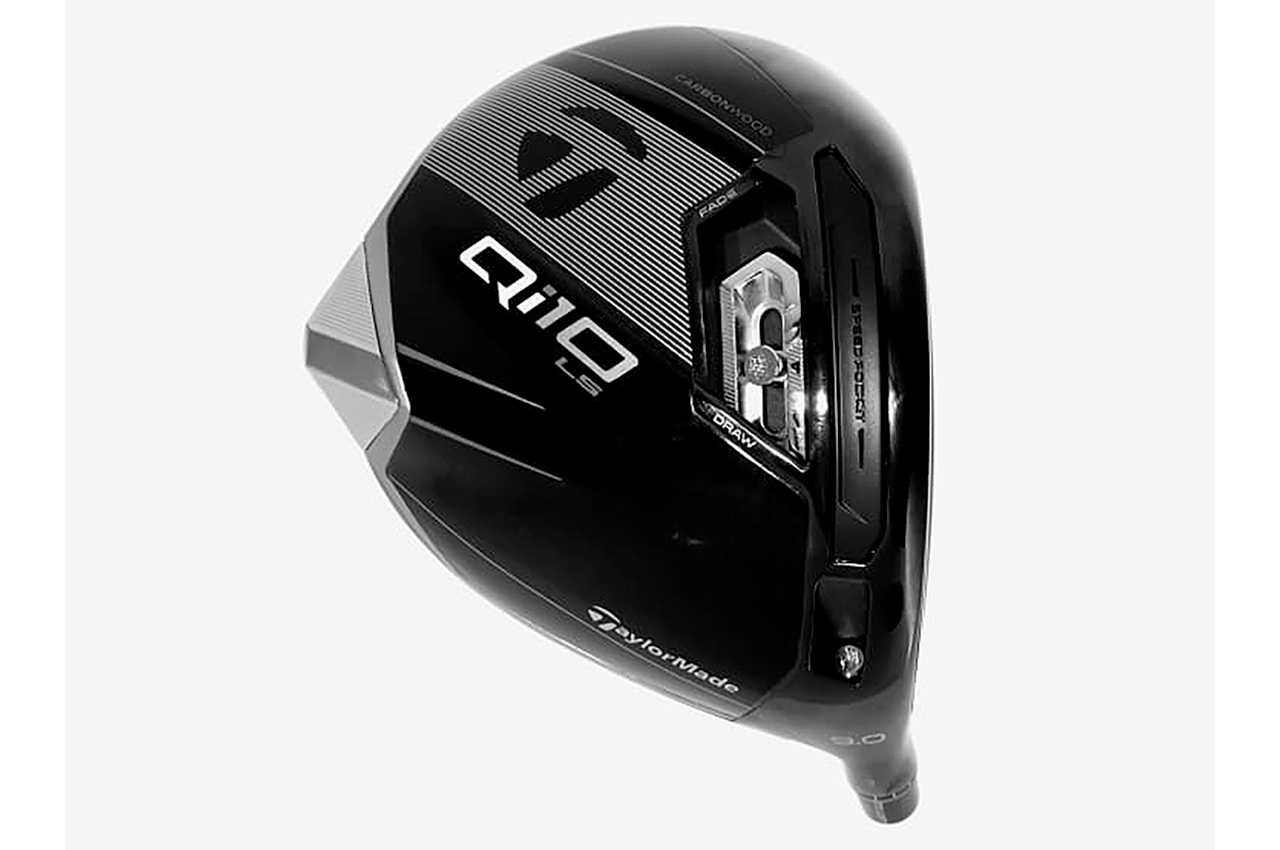When he is faced with a delicate chip from the collar or an awkward shot from a few inches off the green, Tony Finau has been known to turn his putter, a Ping PLD Anser 2D, counter-clockwise in his hands and strike the ball with the toe-end of his putter, popping the ball onto the putting surface.
In fact, he loves the feeling shots like that create so much that he worked with designers and engineers at Ping to build a prototype putter that replicates the sensations of that shot and was just named as one of three people on a utility patent awarded to Ping (U.S. #11,911,670 B2) for a compact putter head. Tony Serrano, Ping’s principal putter design engineer, and John A. Solheim, the company’s president, are also on the patent.
Finau was presented with a patent certificate in Ping’s PGA Tour van on Wednesday outside the gates of Augusta National Golf Club.
“When Tony turns his putter over and hits a putt with the toe, all the mass is directly behind the ball,” Serrano said. “So he came to us and said, ‘How can we make a putter that has some of these feelings and attributes and sounds that I get when I turn this putter over?’”
That led Serrano and his team to develop a few prototypes that would give Finau what he wanted while also conforming to the USGA’s Rules of Golf and equipment standards.

The putter that Finau liked and worked with Ping to develop is cube-like in shape, with a small area in the back hollowed out to create some perimeter weighting. There is also a T-shaped alignment system on the top and a plumber’s neck hosel.
“He looks at the top rail of the putter when he turns it. It’s long and right down the center and helps him align the putter with the ball,” Serrano said. The small T accomplishes the same thing and helps Finau focus on a tiny area and make solid contact more easily.
The small hosel was designed and positioned close to the grooved hitting area so that when Finau putts, his stroke has to pull the center of gravity and the putter’s weight, like a traditional putter, instead of pushing the head’s weight as Finau would do with a flipped-over putter.
“Tony said that he plays with this putter all the time,” when he is home in Utah, Serrano said. Finau has yet to use the un-named putter in a PGA Tour event, but he plans to keep using it as a training aid going forward, and Ping plans to study the tiny putter more closely to see whether attributes of it could be designed into future PLD and retail putters.
[fanpower_carousel id=”178″]

